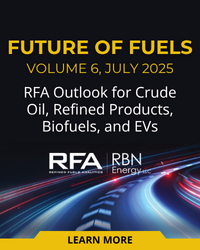Output of naphtha range material such as plant condensates and natural gasoline in the Ohio section of the Utica shale is increasing rapidly as new processing and fractionation capacity in the region comes online. Output of field condensate from the wellhead is also expected to take off in 2014. These light hydrocarbons will be delivered to market by a combination of pipeline, rail and barge infrastructure. Today we look at pipeline infrastructure plans to deliver condensates and natural gasoline to Canada as diluent.
This is Part 3 of a blog series covering midstream plans to capture and deliver condensate range materials to market from Utica shale production. In Part 1 we covered the expected surge in condensate, natural gas liquids (NGLs) and to a lesser extent crude oil production from the Utica shale in the next year (2014) as a result of new infrastructure coming online. Then we described condensate and crude supply infrastructure plans recently outlined by MPC/MPLX at the Hart Energy DUG East Conference (November 15, 2013). In Part 2 we looked at MPLX’s longer term Utica transportation strategy to provide third party shippers with options to move liquids outside the region. This time we take a look at infrastructure proposals from Unity Pipeline Company and Kinder Morgan to move condensate production out of the Utica to Canada.
As we have detailed in a number of blogs, the largest potential market for light hydrocarbons such as condensate and natural gasoline is Western Canadian producers looking for diluent to help their bitumen crude flow in pipelines (see It’s A Bitumen Oil, Does it Go Too Far? and It’s a Kinder Magic the Eagle Ford Diluent Trail). The Canadian market is expected to require growing volumes of diluent imports to supplement local production. In 2013 the Canadian diluent shortfall will be about 200 Mb/d growing to 370 Mb/d by 2018. The main diluent route into Canada is the 1600 mile, 180 Mb/d capacity Enbridge Southern Lights pipeline that runs from Chicago to Edmonton (see Fifty Shades of Eh). Enbridge hopes to expand Southern Lights to carry 275 Mb/d as shipper demand increases. In July 2014 the Kinder Morgan Cochin reversal that will ship 95Mb/d of diluent from Kankakee, IL to Edmonton, will come into service in competition with Southern Lights.
Canadian diluent buyers generally prefer natural gasoline to lease condensate because the former is produced to a more consistent plant specification. However, Southern Lights today and Cochin next year require condensate to meet a standard pipeline specification set by Canadian producers known as the Edmonton CRW. The pipelines use the Canadian version of a crude quality bank, known as “Equalization” to regulate the specification (for more on quality banks see Crude Oil Quality Banks). Lease condensate producers in the Utica therefore need to treat their product by stabilization to meet the pipeline specification for Canadian diluent.
In Part 2 of this series we described how Marathon Petroleum Company (MPC) pipeline plans could potentially allow Utica shippers to route diluent to Canada via third party links in Chicago. Competitor midstream companies are proposing more direct pipeline infrastructure to ship Utica condensate and natural gasoline to the Southern Lights and/or Cochin pipelines to Canada.
One of the first of these projects is the Unity Pipeline, a joint venture of Harvest Pipeline Company (part of Hilcorp); Somerset Gas Transmission Company, and Crossroads Pipeline Company (part of NiSource’s Columbia Pipeline Group) announced November 5, 2013. The project consists of a 380-mile mixture of new and existing pipelines (see red line on the map below). The first section will be a new 12-inch pipeline built by Harvest, from Kensington, OH, to Somerset’s existing North Coast natural gas pipeline at Mantua, OH (green parenthesis on the map). The North Coast pipeline connects to the Crossroads Pipeline at Cygnet, OH, that runs across Ohio and Indiana to Griffith, IN (purple parenthesis). At Griffith the Unity pipeline will connect to the Explorer Pipeline (yellow line). Explorer is a 1400 mile 700 Mb/d refined products pipeline system from Lake Charles, LA to Hammond, IN. Unity shippers will make use of a small section of the Explorer pipeline to connect to the origin of the Enbridge Southern Lights diluent pipeline at Manhattan, IL (green line). Southern Lights connects to Edmonton, Alberta. The North Coast and Crossroads pipeline systems, which currently transport natural gas flowing west to east, will be reversed and converted from natural gas to diluent transport as a part of this project.
Source : Unity Pipeline Open Season and RBN Energy (Click to Enlarge)
Assuming that the Open Season is successful and the new pipeline sections and reversals receive approvals and permits, the Unity pipeline will be in service by mid-2015, operated by Harvest Pipeline Co. The initial capacity of the pipeline will be 60 Mb/d, expandable to 100 Mb/d. The Open Season has two phases – the first being a non-binding solicitation of interest that ends on December 20, 2013. Phase 2 (to be held in 2014) will require prospective shippers to submit binding offers for firm long-term transportation (10 years). The Unity pipeline open season documents indicate a $5/Bbl take or pay committed shipper rate to the Explorer pipeline and $0.75/Bbl for shipping on Explorer to the Manhattan Southern Lights Origin. If there is sufficient interest, Unity will also construct a gathering system and a truck unload facility at Kensington to deliver diluent products from the Marcellus and Utica regions to an interconnection with the new pipeline.
Join Backstage Pass to Read Full Article








